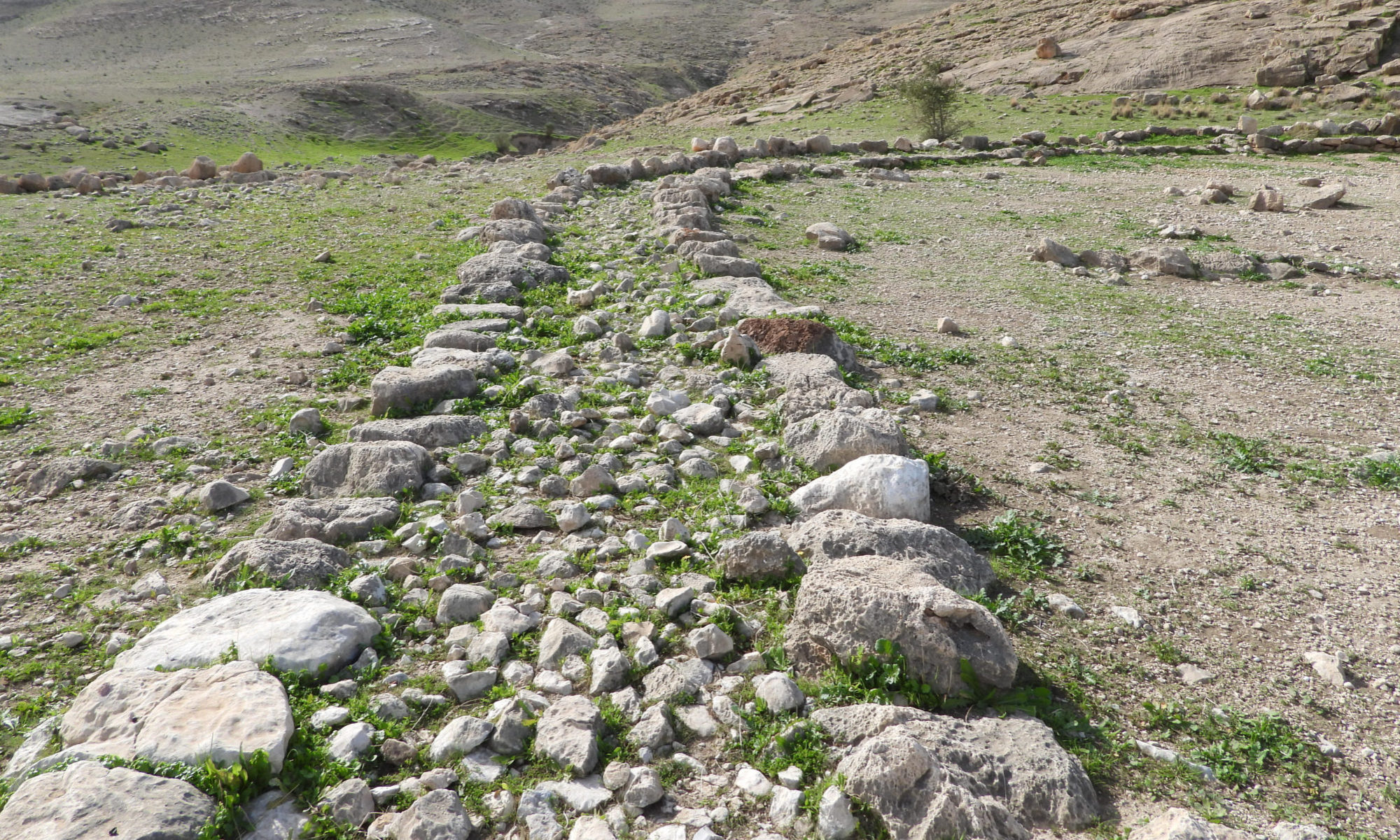
The wild barley, Hordeum spontaneum, commonly known as wild barley or spontaneous barley is examined for forecasting which lunar cycle the barley grains will achieve the developmental level of aviv. The wild barley’s minimal maturity level of aviv is used to forecast which lunar cycle will begin the Biblical New Year (turn-of-the-year) or Biblical Calendar. The reasoning for using the wild heirloom barley is because Deuteronomy records a specific blessing for the nation of Israel:
Deu 11:8 Therefore shall ye keep all the commandments which I command you this day, that ye may be strong, and go in and possess the land, whither ye go to possess it;
9 And that ye may prolong your days in the land, which the LORD sware unto your fathers to give unto them and to their seed, a land that floweth with milk and honey.
10 For the land, whither thou goest in to possess it, is not as the land of Egypt, from whence ye came out, where thou sowedst thy seed, and wateredst it with thy foot, as a garden of herbs: 11 But the land, whither ye go to possess it, is a land of hills and valleys, and drinketh water of the rain of heaven 12 A land which the LORD thy God careth for: the eyes of the LORD thy God are always upon it, from the beginning of the year even unto the end of the year. 13 And it shall come to pass, if ye shall hearken diligently unto my commandments which I command you this day, to love the Yehovah your Elohim, and to serve him with all your heart and with all your soul, 14 That I will give you the rain of your land in his due season, the first rain and the latter rain, that thou mayest gather in thy corn, and thy wine, and thine oil.
My personal understanding of this passage is that Elohim is the gardener for the land of Israel where the nation would be brought.
In modern Israel, the domestic grains are hybridized and watered with water that does not fall from heaven, that is not given to it by Yah. These changes plus the varied planting times do not reflect the will of Yah in the strictest sense. It for this reason that the heirloom volunteer barley is used to determine the start of the biblical calendar.
Guard the month of the aviv and keep the Passover unto Yehovah thy Elohim: for in the month of the aviv Yehovah thy Elohim brought thee forth out of Egypt by night”. Deut 16:1
The wild barley, Hordeum spontaneum, commonly known as wild barley or spontaneous barley is examined for forecasting which lunar cycle the barley grains will achieve the developmental level of aviv. The wild barley’s minimal maturity level of aviv is used to forecast which lunar cycle will begin the Biblical New Year (turn-of-the-year) or Biblical Calendar. The reasoning for using the wild heirloom barley is because Deuteronomy records a specific blessing for the nation of Israel:
Deu 11:8 Therefore shall ye keep all the commandments which I command you this day, that ye may be strong, and go in and possess the land, whither ye go to possess it;
9 And that ye may prolong your days in the land, which the LORD sware unto your fathers to give unto them and to their seed, a land that floweth with milk and honey.
10 For the land, whither thou goest in to possess it, is not as the land of Egypt, from whence ye came out, where thou sowedst thy seed, and wateredst it with thy foot, as a garden of herbs: 11 But the land, whither ye go to possess it, is a land of hills and valleys, and drinketh water of the rain of heaven 12 A land which the LORD thy God careth for: the eyes of the LORD thy God are always upon it, from the beginning of the year even unto the end of the year. 13 And it shall come to pass, if ye shall hearken diligently unto my commandments which I command you this day, to love the Yehovah your Elohim, and to serve him with all your heart and with all your soul, 14 That I will give you the rain of your land in his due season, the first rain and the latter rain, that thou mayest gather in thy corn, and thy wine, and thine oil.
My personal understanding of this passage is that Elohim is the gardener for the land of Israel where the nation would be brought.
In modern Israel, the domestic grains are hybridized and watered with water that does not fall from heaven, that is not given to it by Yah. These changes plus the varied planting times do not reflect the will of Yah in the strictest sense. It for this reason that the heirloom volunteer barley is used to determine the start of the biblical calendar.
Guard the month of the aviv and keep the Passover unto Yehovah thy Elohim: for in the month of the aviv Yehovah thy Elohim brought thee forth out of Egypt by night”. Deut 16:1
In Deuteronomy 16:1 there is a term that divides a lot of people in their calendar beliefs. That term is ‘aviv’. Strongs explains aviv as:
H24
אָבִיב
‘âbı̂yb
aw-beeb’
From an unused root (meaning to be tender); green, that is a young ear of grain; hence the name of the month Abib or Nisan: – Abib, ear, green ears of corn.
Strong’s Concordance was originally written in 1890 and Webster’s first dictionary was published in 1828. Basically, these men were contemporaries.
The King James Version (KJV), also called Authorized Version or King James Bible was published in 1611.
Angelo-Saxon or Old English was used for a period of 700 years, from the Anglo-Saxon settlement of Britain in the 5th century to the late 11th century, around 1150 CE. Around 85% of Old English words are no longer in use.
And so the debates and disagreements over what the word abib means rage on. It is the source of the Annual Body Barley Wars. But I do believe that the intent of the word can be known if we are dilligent to use the tools that we have. Middle English followed Angelo-Saxon and maintained much of the same word meanings.
From Middle English eere, er, from Old English ēar (Northumbrian dialect æhher), from Proto-Germanic *ahaz (compare West Frisian ier, Dutch aar, German Ähre), from Proto-Indo-European *h₂eḱ- (“sharp”) (compare Latin acus (“needle; husk”), Tocharian B āk (“ear, awn”), Old Church Slavonic ость (ostĭ, “wheat spike, sharp point”).
Noun
ear (plural ears)
(countable) The fruiting body of a grain plant. He is in the fields, harvesting ears of corn.
We can see that the intent was for us to understand the awns of the grain were to still be green. This was according to Middle English etymology. Now we will turn to Biblical Hebrew Etymology.
Abib, aviv, or אביב
ripen; greedily absorb mourishment from the ground.
e/c: 1: ripening; completing development (Ex 9:31 כי השעורה אביב because the barley was abib) 2: stalk greedily sucking up nourishment (Ss 6:11dm לראות באבי הנחל to see the fruits of the valley; also Gn 2:7, Ex 15:8) 3: A month when stalks ripen (Ex 13:4 בחודש האביב in the month of the abib) 4: ripened stalk (Lv 2:14 אביב קלוי באש green ears of corn dried by fire)
The Biblical Etymology dictionary allows for the term to mean from a stage that is ripening to a ripened stalk. Their understanding is very broadly stated.
Next we turn to the Genesius Hebrew-Chaldee Lexicon to the Old Testament:
אביב (from the root אבב), m, an ear of corn, a green ear, Lev 2:14; Ex 9:31, השעורה אביב “the barley was in the ear,’ i.e. the ears (not the grain) were developed. Comp. as to the syntax, Cant. 2:13, חדש השביב “a month of the green ears” at a later period called ניסן (nissan), beginning at the new moon of April (of March, according to the Rabbins), the first month of the old year [as instituted on coming out of Egypt] Ex 13:14; 23:15; Deu 16:1
There’s another piece of information that needs to be added to our arsenal. It comes from the contextual use of the word abib. The law of first mention was termed by Jewish Biblical scholars, they noticed a pattern. The pattern showed them the first place that a word or an idea is mentioned usually gives you the definition. So when we look at the first place a term or idea is mention it usually tells a lot about what the term or idea is all about. This holds true of the term abib. The first location we find this word is in Exodus 9:31 and I believe Exodus 9:32 holds the key to completely understanding the concept of the term abib.
Exo 9:31 And the flax and the barley was smitten: for the barley was (in the ear- abib), and the flax was (bolled-in bloom). 32 But the wheat and the rie (spelt) were not smitten: for they were (not grown up-afel).
Right off the bat we know what needs to be abib to start a new year, we need the (wild) barley to be abib. We also need the flax to be in bloom. Verse 32 includes that the wheat and spelt need to be afel. In other words, this key verse is telling us when the flax has starting to bloom, when the wheat and the spelt are afil, then the barley is abib. So what does the word ‘afil’ mean?
H648
אָפִיל
‘âphı̂yl
aw-feel’
From the same as H651 (in the sense of weakness); unripe: – not grown up.
That’s still not very clear. Here’s the root:
H651
אַפֵל
‘aphêl
aw-fale’
From an unused root meaning to set as the sun; dusky: – very dark.
After my research, I checked my information with my husband’s cousin-in-law who is a Torah instructor to twenty nations in the world. Wheat and spelt that are afilot are in darkness. In other words, when the wild barley is harvest-ready the wild wheat and wild spelt will still be located inside of the ‘boot’ or the body of the plant. You will not yet be able to see the ears or the heads of grains in either of these plants.
Using wild barley that has grains that are medium dough and green awns allows for roasting of the grains (Lev 2:14), it allows for the grains to make a ground offering (Lev 2:1), it allows for a grain that will reproduce when planted (John 12:24) and it allows for the wild wheat to be harvest-ready at the end of the seven-week count to Shavuot.
The reason the Body is divided is because there are many that only check the wild barley without understanding the criteria of Exodus 9:31,32. Without wanting to sound vulgar, abib can mean anything you want it to mean if you are only using the barley to determine the start of the year.
Barley was offered during the Passover season. Wheat was offered during Shavuot. But. There are a total of seven firstfruits offerings that were to be given throughout every biblcal year.
Deuteronomy 8:8 A land of wheat, and barley, and vines, and fig trees, and pomegranates; a land of oil olive, and honey;
Wheat and barley are the fruit of the earth; grapes, figs, pomegranates, olives, and dates were the fruit of the trees.
Lev 26:4 Then I will give you rain in due season, and the land shall yield her increase, and the trees of the field shall yield their fruit.










